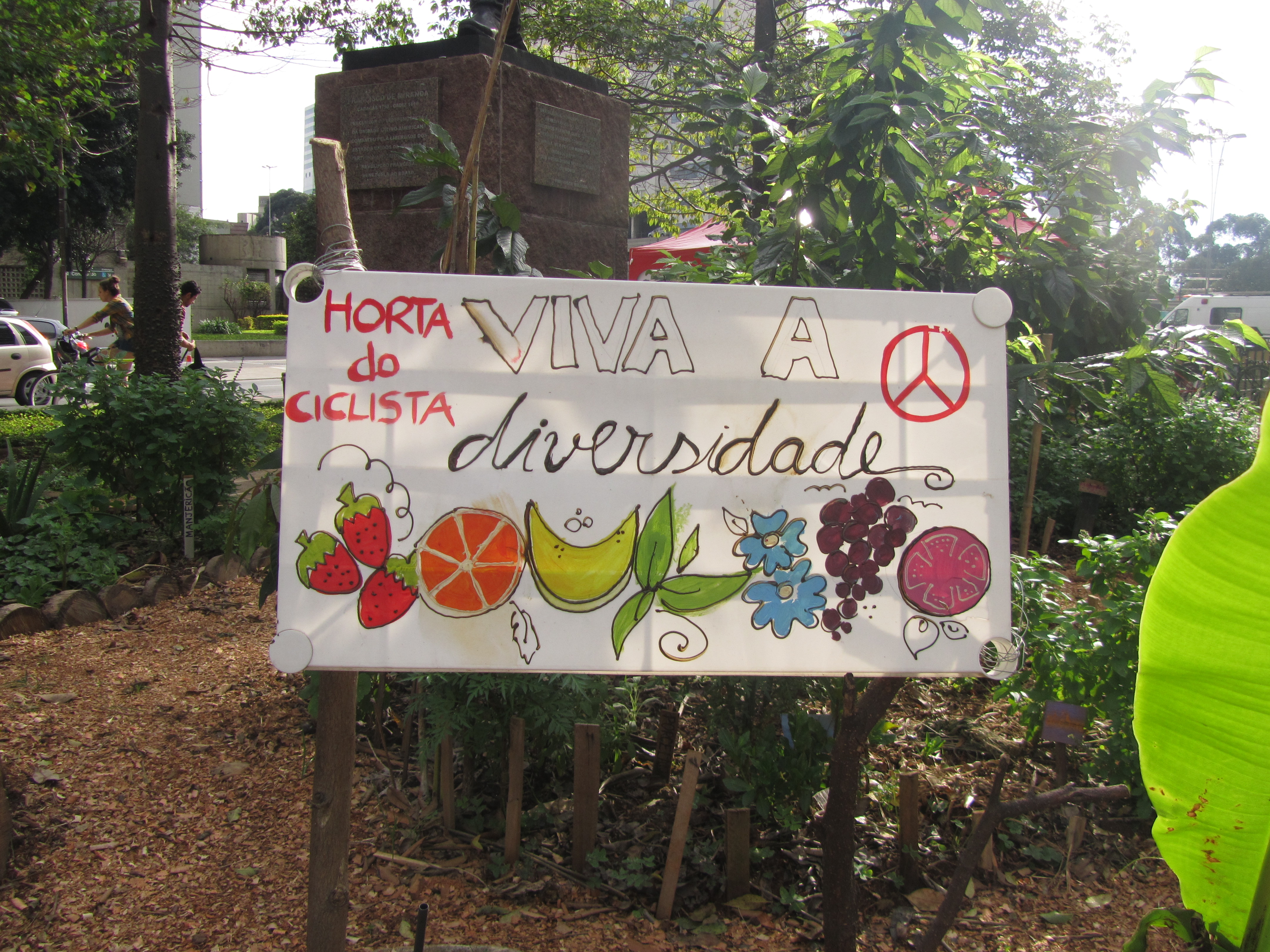It is easy to miss Horta do Ciclista (the Cyclist’s Garden) in Praça Ciclista at the corner of Avenida Paulista and Rua Consolação in São Paulo. Especially if you did not know where it was located as I did (not) when I first went walking on Paulista on an assignment to find urban interventions. I was back on the weekend, after first confirming the location, and spent some time walking in the garden.
Maracuja vines snake up and across a wire attached to a spiny tree in the circular Praça Ciclista. Without the wooden signs at the bottom of the plant, I confess it might have taken me longer to spot the passion fruit we once grew in the garden at home.
As I remain standing on the outside looking in two women walk into the garden- boldly, like they own it; like they’ve done this before. They emerge on the other side of the winding straw-dust paths that divide the garden, one holding a bunch of what looks like kale to me in hand. Is this a garden where anyone can pick what they need, I wonder? In any case, I gain the courage to walk into and around the garden to see what it contains besides kale and maracuja.
The diversity proclaimed by the wooden board at what I take to be the entrance is evident in the myriad of plants in all leaf shapes and sizes visible as I step onto the garden. I walk by some recognisable names and plants, and others strange: capuchinha, salsinha…
Around the statue in the middle of the praça I spot what I am sure must be mint… only it has the name, as yet strange to me, of hortelã. I bend low, break a leaf in two and smell it- yes mint! Then I notice that the soil below the mint is alive with movement. Ants, worms and other unknown to me creatures go about their business over the dark soil. My camera’s click-click alerts the creatures to my presence and one freezes in its tracks. So I leave mint-hortelã and keep walking through the garden.
The names get stranger as I keep walking- manjericã, alecrim, girassol- not betraying what they might be to novices like me. I will have to spend some time with Google translate, I decide. But banana- that one I know! Salvia…? I see an unlabelled mango tree and am glad I don’t need a label to recognise it. Porcelana, abobóra (pumpkin)… I bend down to put back up a fallen sign- manjerica- and disturb a few bees. I hope that’s where the sign is supposed to go- sometimes I see why a smartphone might be useful.
Below another unknown plan I see the sign ‘Bertalha anita’ – that can’t be a plant name, can it? I wonder. Maybe it’s the name of the person who planted it? And then I realise again that all the signs in the garden are hand-painted. Couve in red-orange, boldo in blue and white. There’s so many manjerica signs, I have to find out what it is- black on white, white on black paint.
There are also plants I recognise from home (Kenya) but whose names I’ve never known. I suppose this could be where I learn. The next first Sunday of the month when the garden has its communal mutirão might find me here.
It is fitting, I think, that the horta surrounds the statue of Francisco de Miranda, defender and revolutionary Venezolano, according to the plaque below the statue. This garden at the tip of São Paulo’s financial, hence concrete and glass, heart is, by providing fresh food, a ‘defensor dos direitos, liberdade e independencia’ – defender of the rights, liberties and independence – of Paulistanos- and of wayward visitors like myself.

garden walks: horta do ciclista
•




Talk to me